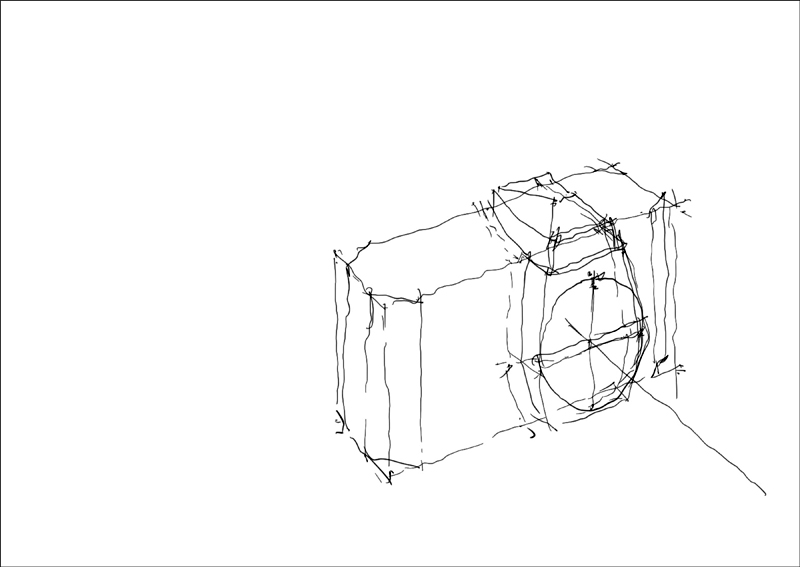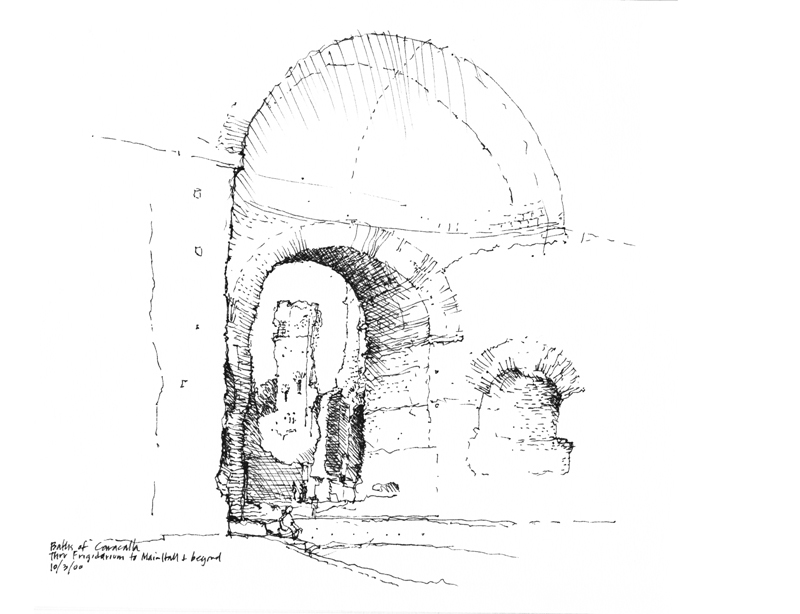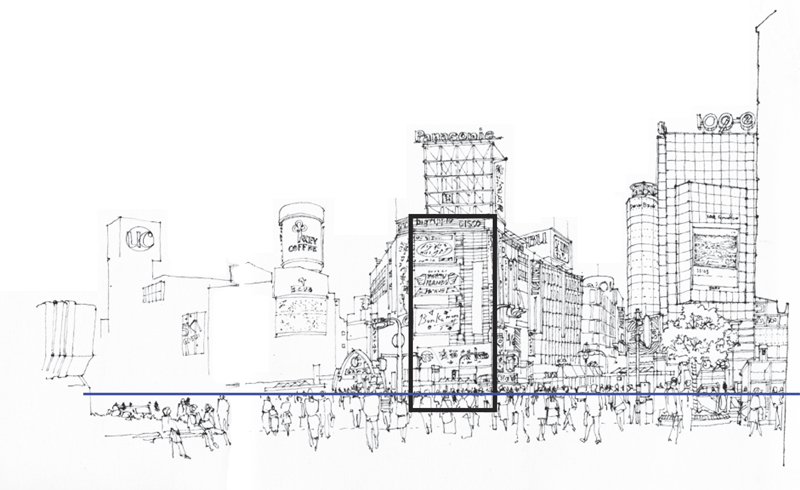
Looking for something to draw during the current stay-at-home situation, an old manual SLR caught my eye. Here is a sequence of views showing the process by which I captured the Nikon FE2, a beautifully crafted machine. First, as shown above, I blocked out the main body of the camera. I placed the body to the right to allow for the later inclusion of the neckstrap.

Next, I developed the angled, faceted corners and the off-center position of the viewfinder and lens housing.

I then blocked out the viewfinder prism and lens housing along with a very important line, perpendicular to the body, that indicates the central axis of the lens. This would help guide the later development of the cylindrical forms of the lens.

The next step was to indicate the circular positions and sizes of the shutter speed dial, shutter release button, film winder, film rewind dial, and the eyelets for the neckstrap.
Next week, I will show the final stages of development.


























